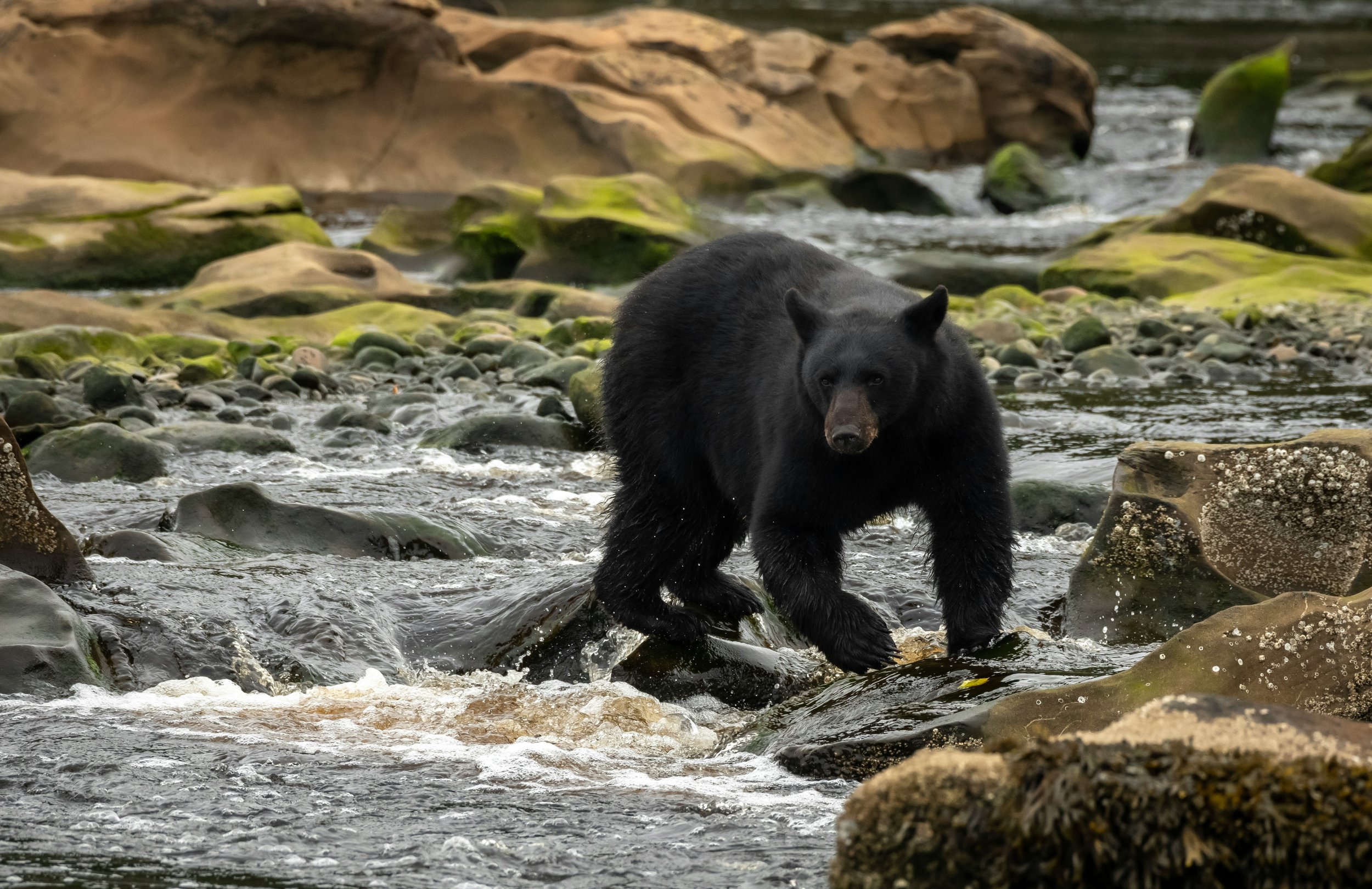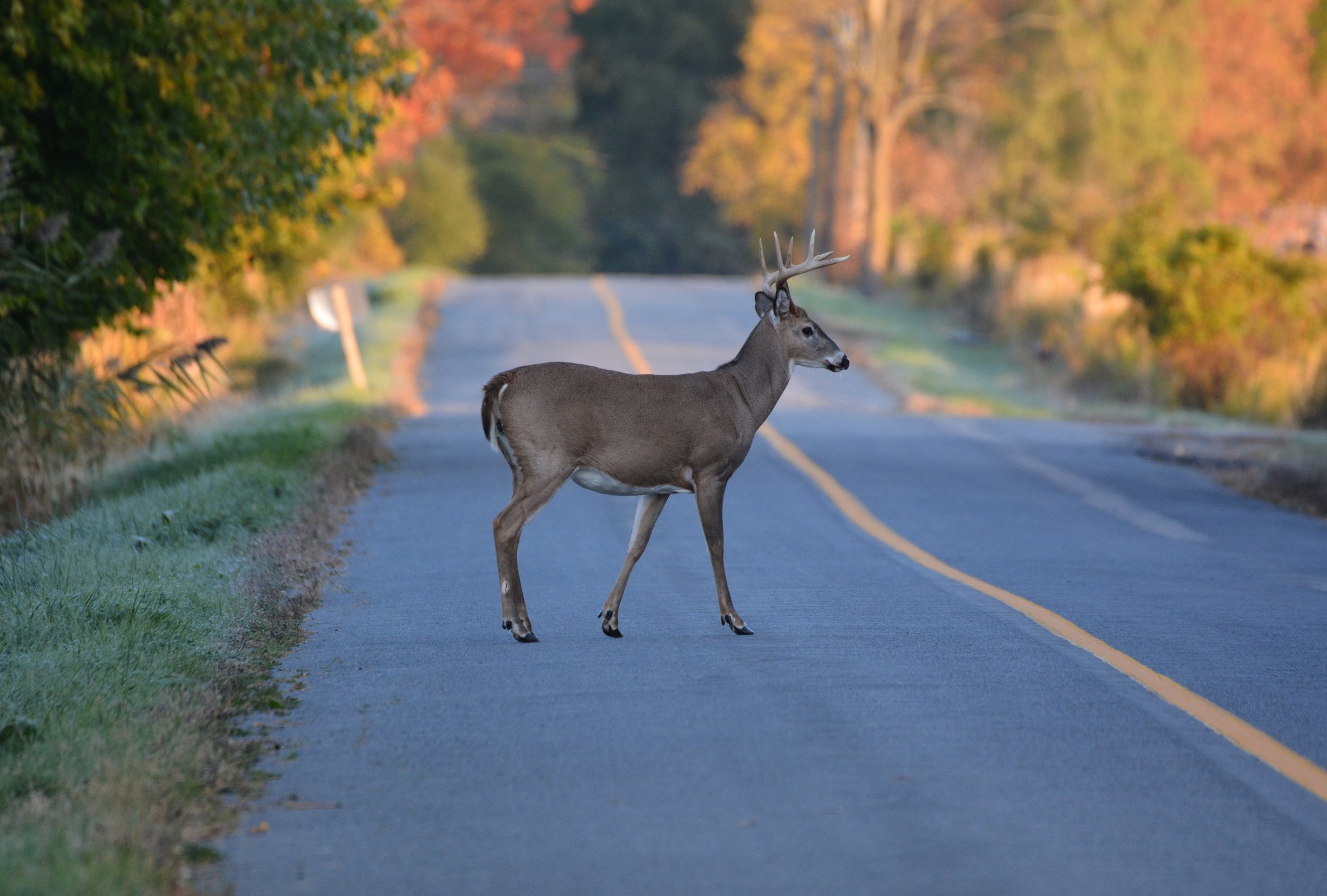Critical New York Wildlife Bill Awaits Governor Hochul's Signature
NEW YORK, NY — If Governor Hochul signs the New York Wildlife Crossing Act (S4198B) into law, it will mark a significant step forward for both public safety and wildlife conservation in the state. This bill directs the New York State Department of Transportation (NYSDOT) and the New York State Thruway Authority (NYSTA) to utilize existing data on wildlife-vehicle collisions and habitat fragmentation to identify key areas for wildlife crossings. With the potential for grant funds from the federal Wildlife Crossing Pilot Program, this act is a catalyst that will improve New York's ability to protect wildlife and reduce the number of wildlife-vehicle collisions.
Pacing across the river, a black bear hunts for a fish. Photo by Greg Johnson.
The statistics are staggering: New York experiences approximately 65,000 deer-vehicle collisions annually, many of which can cost upwards of $40,000. These statistics aren't entirely exhaustive since this data excludes incidents involving other large and small animals, including threatened and endangered species. Additionally, wildlife habitat fragmentation and corridor loss are among the primary causes of biodiversity loss. Some areas have seen a reduction in biodiversity upwards of 75%.
White-tailed deer buck on road. Photo by Carol Hamilton.
Thankfully, the New York Wildlife Crossing Act will enhance the protection of New York’s biodiversity and reduce collisions by identifying priority locations for wildlife crossings. “Wildlife crossings have proven effective in reducing both habitat fragmentation and wildlife-vehicle collisions nationwide,” says Ed Marx, the Northeast Program Coordinator at Wildlands Network. “The New York Wildlife Crossing Act is an essential component of New York’s efforts to protect and connect wildlife habitat across the state under New York’s 30x30 goal, which aims to conserve 30 percent of our lands and waters by 2030.”
With over 20 federal grant opportunities available, the New York Wildlife Crossing Act would greatly benefit New York.
Wildlife crossings are essential for maintaining habitat connectivity, which supports critical ecological processes such as pollination, dispersal, and gene flow. Ensuring wildlife can move freely across the landscape is vital for their health and survival, making the implementation of these crossings a crucial measure in the fight against the biodiversity crisis. Once this act is signed into law, the wildlife crossing analysis will help identify priorities for crossing projects.
A beaver coming out of the river near its dam. Photo from Adobe Stock.
Wildlands Network has been engaged from the beginning with the bill's sponsors, Senator Comrie and Assemblymember Carroll, starting with the introduction of a similar bill a few years ago. This is one of many collaborations between Wildlands Network and partners in recent years, including prioritizing habitat connectivity in the New York State Open Space Conservation Plan, implementation of New York State’s 30x30 goals and promotion of ecological forest management on public and private forestland.
Wildlands Network’s staff, as well as Senator Comrie and Assemblymember Carroll, are looking forward to Governor Hochul’s signature on this impactful bill.
You can help support this act by contacting Governor Hochul and letting her know that you eagerly await her signature on this bill.




